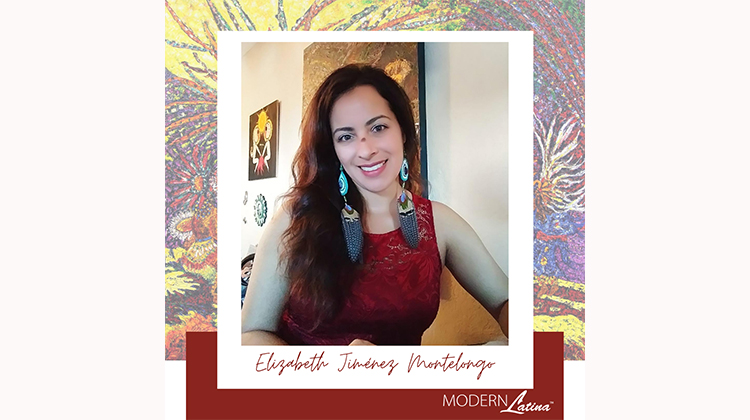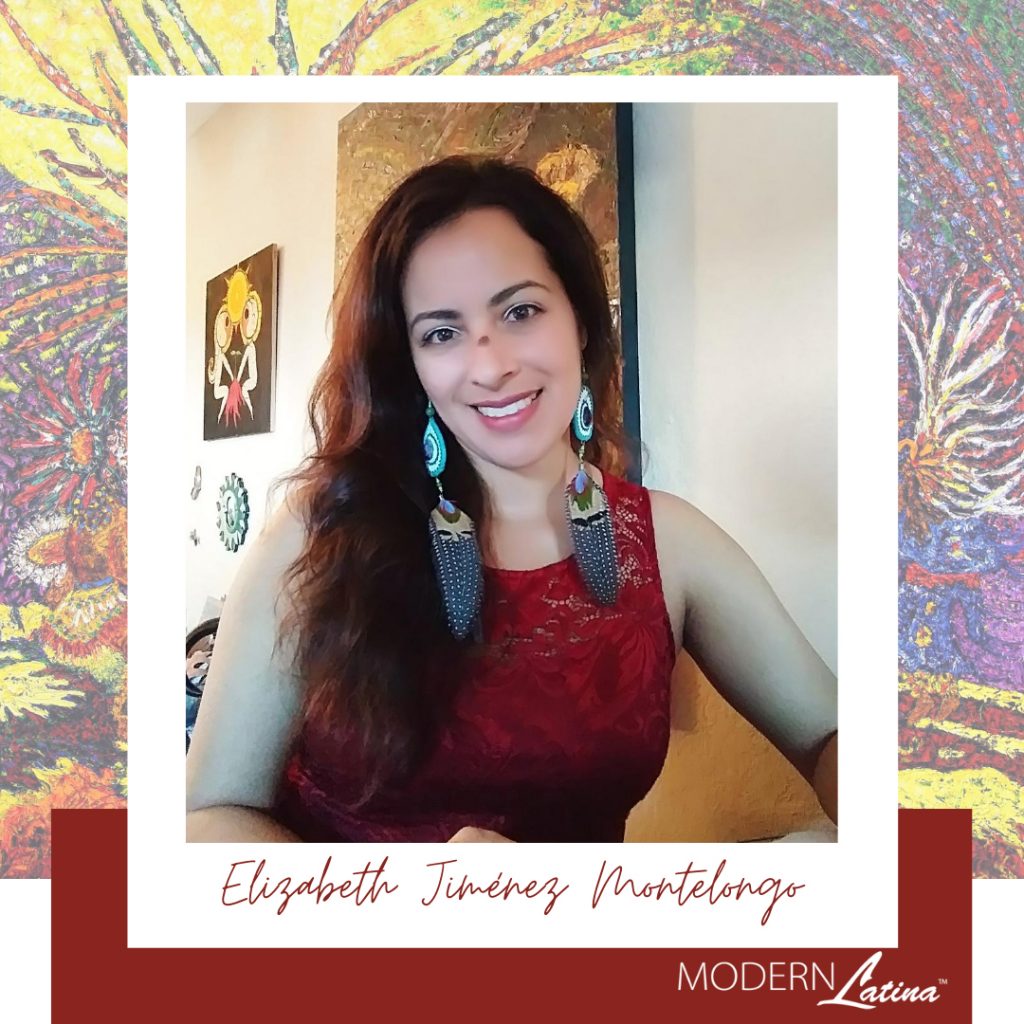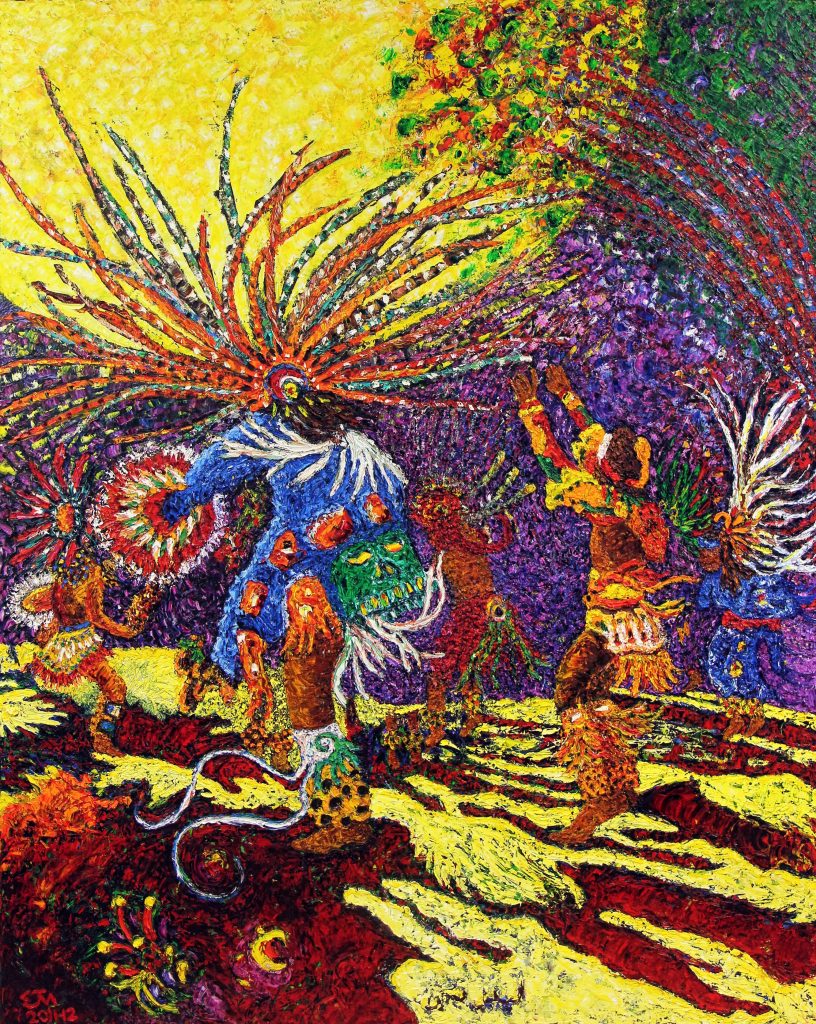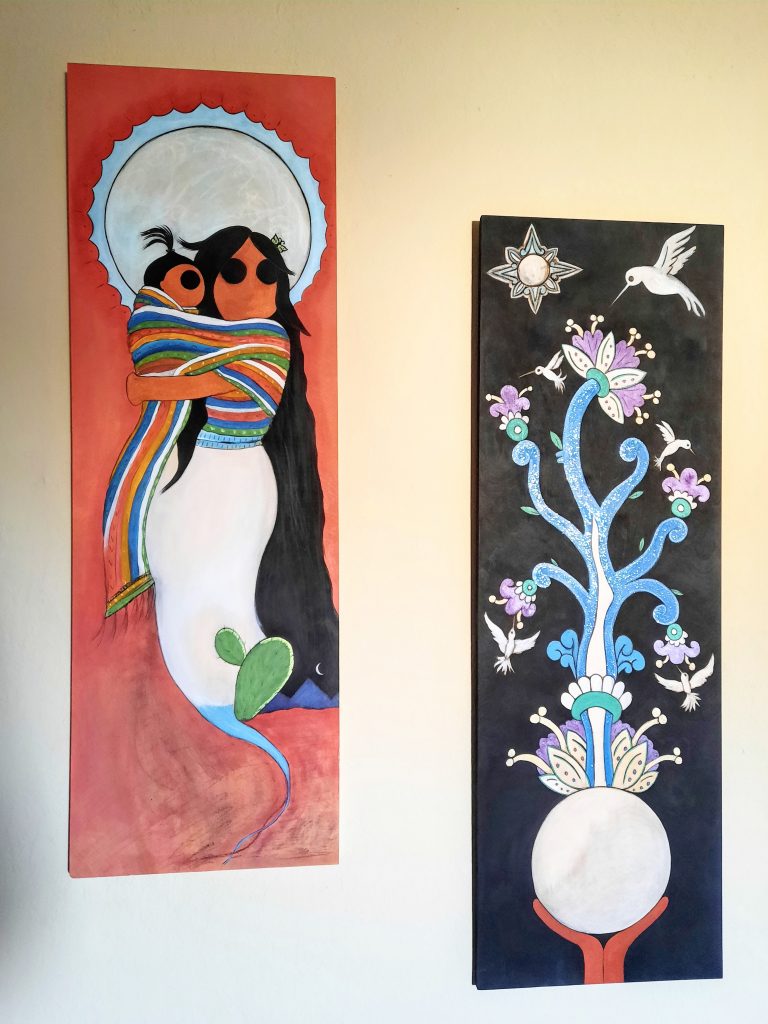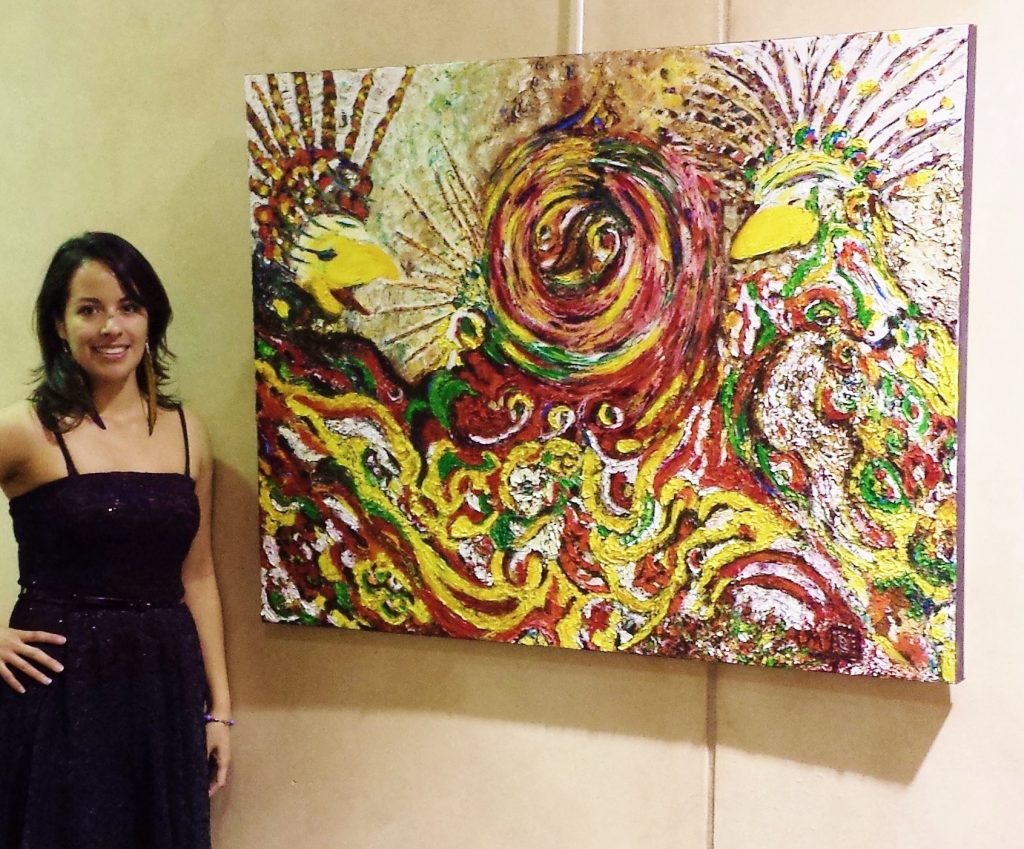Meet Elizabeth Jiménez Montelongo, a visual artist, poet, and teacher based in the San Francisco Bay Area. Her work addresses themes of identity, transformation, and empowerment. Her artwork is influenced mainly by her indigenous Mesoamerican ancestry, Mexika (Aztec) artwork and philosophy, Mexican culture, Chicano history, and her experiences as a woman in the United States.
Her poetry is influenced by her indigenous Mesoamerican ancestry, Mexika (Aztec) philosophy, Mexican culture, Chicano history, and her experiences as a woman in the United States.
Revelations
The illusions were weaved
Before I floated in the darkness.
As I drifted through the fog,
The rules were made,
The limits set,
The boundaries marked.
It would be foolish to
Question them–
I know they’re wrong.
The light is bright
When the illusions are revealed.
The waves of my heart
Crash and wash away… boundaries
The wind of my thoughts tears down… limits
The fire in my heart burns… rules.
I expand, no longer contained
Inside a body of flesh and bones.
The light is bright
When the illusions are revealed.
I see you now.
Do you see me?
We were land workers,
Our bodies cried into the soil
For the joy of creation.
Then, we became farmworkers,
My grandfather’s body cried into the soil.
We ate the fruit of the tear-soaked earth,
Now, I am a farmworker,
As are you.
The light is bright
When the illusions are revealed.
I see me now.
Do you see yourself?
Yesterday, I scrubbed and scrubbed,
But the brown stayed on my skin.
Today, I reach two hands into the earth
For black soil to coat my body.
I rub it into my skin,
And stand.
There is a long way to go.
Tomorrow, I will wash my tired feet.
“Revelations” was first published in Caesura 2017 Ascent/Descent, Poetry Center San José, in 2017.
In her own words
What sparked your initial love of poetry? Who are some of your favorite poets?
I began to love poetry in 8th grade when I first started reading and writing poetry.
Two poems that first inspired me to write about identity, culture, and social issues are the powerful poems “I am Joaquín” by Rodolfo “Corky” Gonzales and “Still I Rise” by Maya Angelou. My views are informed by culture writers I admire, including: Gloria Anzaldúa, José Antonio Burciaga, Cherríe Moraga, Gary Soto, and Sandra Cisneros.
Can you share a favorite poem you have written and why it is your favorite?
One of my favorite poems I’ve written is “It is I, the Immigrant.” This poem reveals the irony of a socio-political “immigrant” label imposed on people indigenous to North America, positively reimagines common negative stereotypes, and declares empowerment through identity. This poem will be included in my first full-length poetry collection and is to be published in the online journal Label Me Latina/o Fall 2020.
What is your first full-length poetry collection is about?
My first full-length poetry collection was completed in 2020, pending publication, and includes 52 poems. The first 26 poems are about identity, culture, and social justice issues, while the second set of 26 poems are about emotional and spiritual journeys of the human experience. In 2020, I also completed my first chapbook of 20 poems, also pending publication, and the themes are self-awareness, reflections on economic and political systems, social issues, and women’s rights. Full poems, video recording, and poetry-artwork can be found at: www.ejmontelongo.com/poetry
In addition to your poetry, you are also a visual artist. How is the creative process different for you when you write a poem versus creating visual art? Do the two forms of artistry ever intersect?
Like my poetry, my visual art also centers themes of identity, culture, and social issues. My poetry and art have come together, most significantly in my project Footless Dancers, which is a series of 13 paintings based on a poem by the same name, with images of indigenous dancers and lines of the poem creatively interwoven. My poetry-artwork The Moon was exhibited in the exhibition Imagine at the Triton Museum in 2014.
My creative process for writing poetry is similar to my visual arts process. When I paint, it is usually based on an image that evokes emotion in me, an image that just appears in my mind, or I consciously plan an image based on a concept. Likewise, my poems are either inspired by an emotional reaction to an experience, started with lines that just pop into my head, or I consciously decide to write about a topic I’m processing.
You can follow Elizabeth Jiménez Montelongo’s work:
- Website: http://www.ejmontelongo.com/poetry.html
- Instagram: https://www.instagram.com/elizabethjimenezmontelongo/
- Twitter: http://twitter.com/ejmartist
